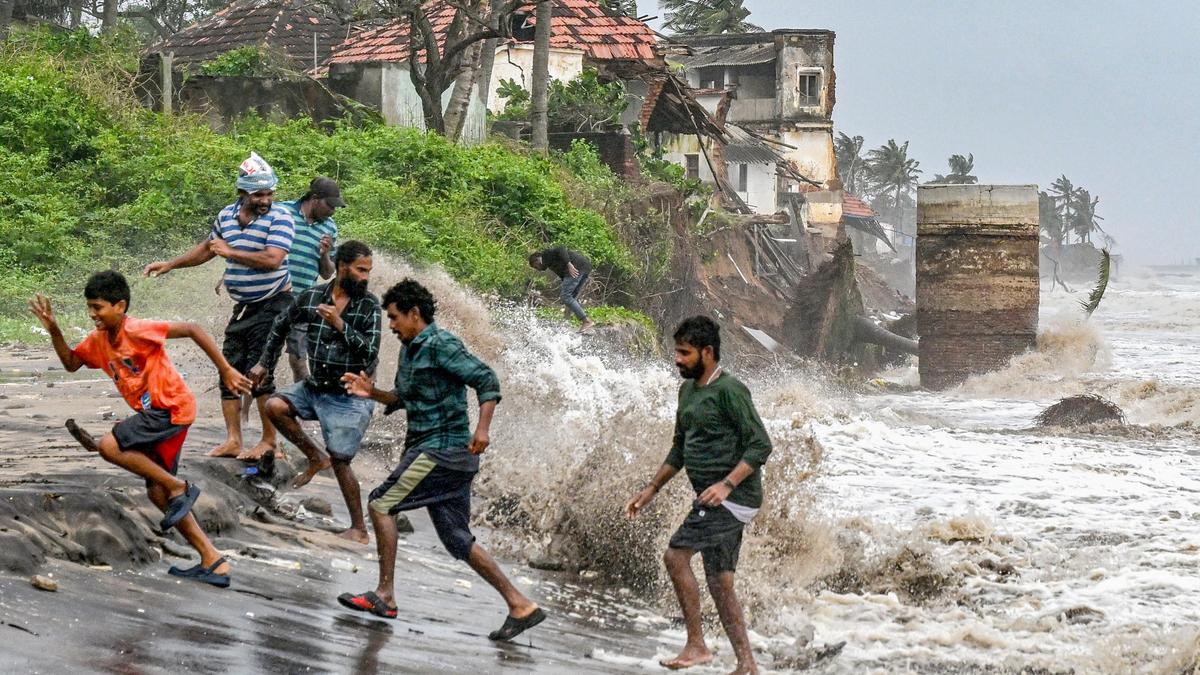
People running away as high tidal waves lash the shore under the impact of Cyclone Montha ,at Uppada village in Kakinada district of Andhra Pradesh, on Tuesday.
| Photo Credit: K.R. DEEPAK
Since 2010, Andhra Pradesh has borne the brunt of at least 10 major tropical cyclones, some of them categorised as severe and very severe cyclonic storms. Not only Andhra Pradesh, Tamil Nadu and Odisha also were also affected by these storms.
In all these storms, meteorologists have identified a common element—the high intensity of the storms and the trails of destruction they left after landfall —and they blame the rapid rise in sea surface temperature (SST) over the last few decades for this.
According to Prof. S.S.V.S. Ramakrishna, former Head of Department of Oceanography and Meteorology, Andhra University, the Bay of Bengal has recorded a consistent rise in the SST. Sea temperatures have regularly exceeded the 20°C to 30°C mark, creating an ideal environment for the formation of tropical cyclones.
“As the water gets warmer, latent heat energy increases, increasing the possibility of cyclones. In the last 50 years, studies conducted by IITM Pune have indicated that the SST in Bay of Bengal has gone up by 0.5°C to 1 °C,” he said.
Prof. O.S.R.U. Bhanu Kumar, former HoD, from the same department, attributed the changing factor to global warming and climate change.
The warming of the atmosphere increases the capacity of the air to hold moisture, which leads to heavier rainfall during cyclones and intensified wind speeds. That is why we have seen cyclones, where the winds varied from 110 kmph to 200 kmph, he said.
In the recent times, positive IOD (Indian Ocean Dipole) and La Niña (warmer Indian Ocean and Cooler Pacific) have contributed to more favourable conditions for cyclonic formations over the Bay of Bengal, he said.
Both experts cautioned that deforestation and degradation of coastal ecosystems such as mangroves and wetlands, have reduced the natural buffers, amplifying the damage by cyclones.
Published – October 28, 2025 11:02 pm IST


